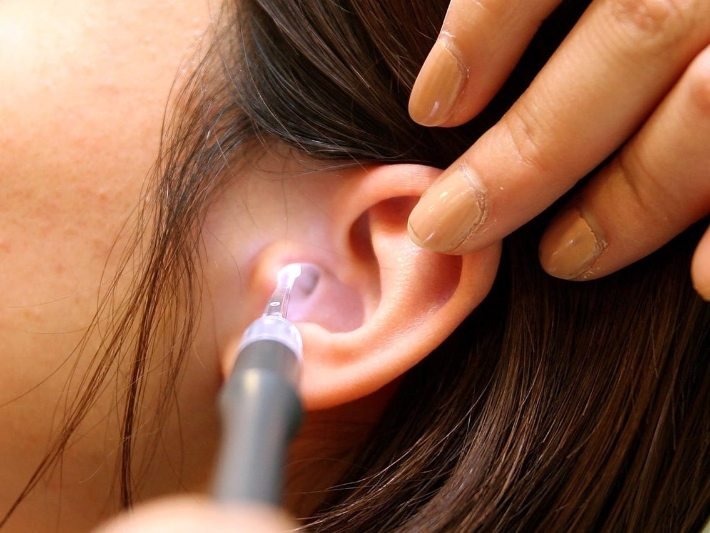It may sound strange, but earwax isn’t a bad thing. In fact, it might be the reason you can hear. The ear canal comprises skin, hair, and glands that produce a sticky wax that traps dirt and prevents infections. However, too much of this waxy buildup can cause serious problems. Everyone has earwax, which should naturally move down and out of the ear regularly.
Table of Contents
Six effects of excess ear wax build-up
Here are some effects of excess ear wax build-up:
Earache
Earache is one of the most common problems caused by ear wax build-up. Your ear canal can become blocked by the wax, or it can be aggravated by foreign particles such as dust, dirt, and hair that get stuck in your ear. This can lead to fluid accumulating in your ear, causing pain and discomfort.
Hearing loss
Excess earwax can also cause hearing loss if it blocks your eardrum from vibrating, making it difficult for you to hear sounds clearly or at all. Hearing loss is more likely if you have osteoporosis (a condition where the bones become weak and brittle), diabetes, or other conditions that affect blood flow to your ears.
Tinnitus (ringing in the ears)
Tinnitus is another common problem caused by excess earwax build-up. It can also be a symptom of hearing loss if your eardrum has been damaged by excessive pressure on its surface due to excessive earwax buildup. Tinnitus can be temporary or permanent depending on how much damage has been done to your eardrum and whether it has adequately healed after treatment for excess earwax buildup.
Itchiness
Excess ear wax build-up can cause itching in the ear canal. This is because the wax acts as a shield against bacteria in the ear and prevents them from entering the ear canal, thereby reducing the risk of infections. However, if there is too much wax, it can block the opening of your ear canal, and this will make it difficult for air to circulate freely through your ear and cause itchiness.
Vertigo
Vertigo is a medical condition in which you feel dizzy and lose balance because of spinning in your head or inner ear fluid imbalance. An excessive buildup of earwax can lead to vertigo if it blocks airflow in your ears or causes pressure buildup. This will lead to dizziness, imbalance, and difficulty hearing sounds clearly since sound travels through air, not water or liquid, as most people believe!
Ear infection
Excess ear wax can lead to an ear infection. This is because the wax blocks the ear canal’s outer part, preventing air from reaching your eardrum. The lack of air makes it easier for bacteria to grow.
How do hearing aids impact ear wax?
Hearing aids can be a great way to fix your hearing problems but can also have unintended side effects. One of these side effects is earwax build-up.
Hearing aids can cause earwax build-up because they force air through the ear canal, pushing out any remaining moisture and wax already in the canal. This then causes more wax to form around the tubing and receiver of the hearing aid, making it more difficult for you to hear correctly. This is why many people who wear hearing aids have trouble hearing low pitches or bass sounds in music or speech.
How can I safely remove ear wax?
Removing ear wax is a simple process that you can perform yourself, but it’s best left to an ear, nose, and throat doctor (ENT) if you have been experiencing hearing loss or pain or have any concerns about your earwax. You should also see an ENT if you’ve had a perforated eardrum or if you have medical conditions such as diabetes, which may make it more difficult for your body to produce normal levels of cerumen.
There are several ways to remove ear wax:
- Using drops: Ear drops containing hydrocortisone can soften hardened ear wax so it can be removed more easily.
- Using irrigation: Irrigation involves using a water bottle and syringe or bulb syringe to flush out the wax from the outer ear canal. This method is not recommended for people who have perforated eardrums or have had recent ear surgery because it could cause an infection.
- Using suction devices: Some suction devices, such as the Otoscopy Sucker, gently suck out excess liquid, bacteria, and debris from the external auditory canal without causing damage or trauma to the skin lining the canal or eardrum.
Conclusion
Long-term exposure to earwax leads to inflammation and recurring infections, so the goal is to clean your ears several times a week. However, don’t attempt to administer self-treatment if you have a perforated eardrum or if earwax has built up beyond the ear canal. Also, seek out a hearing test in Victoria BC if you notice any symptoms of an ear infection.

